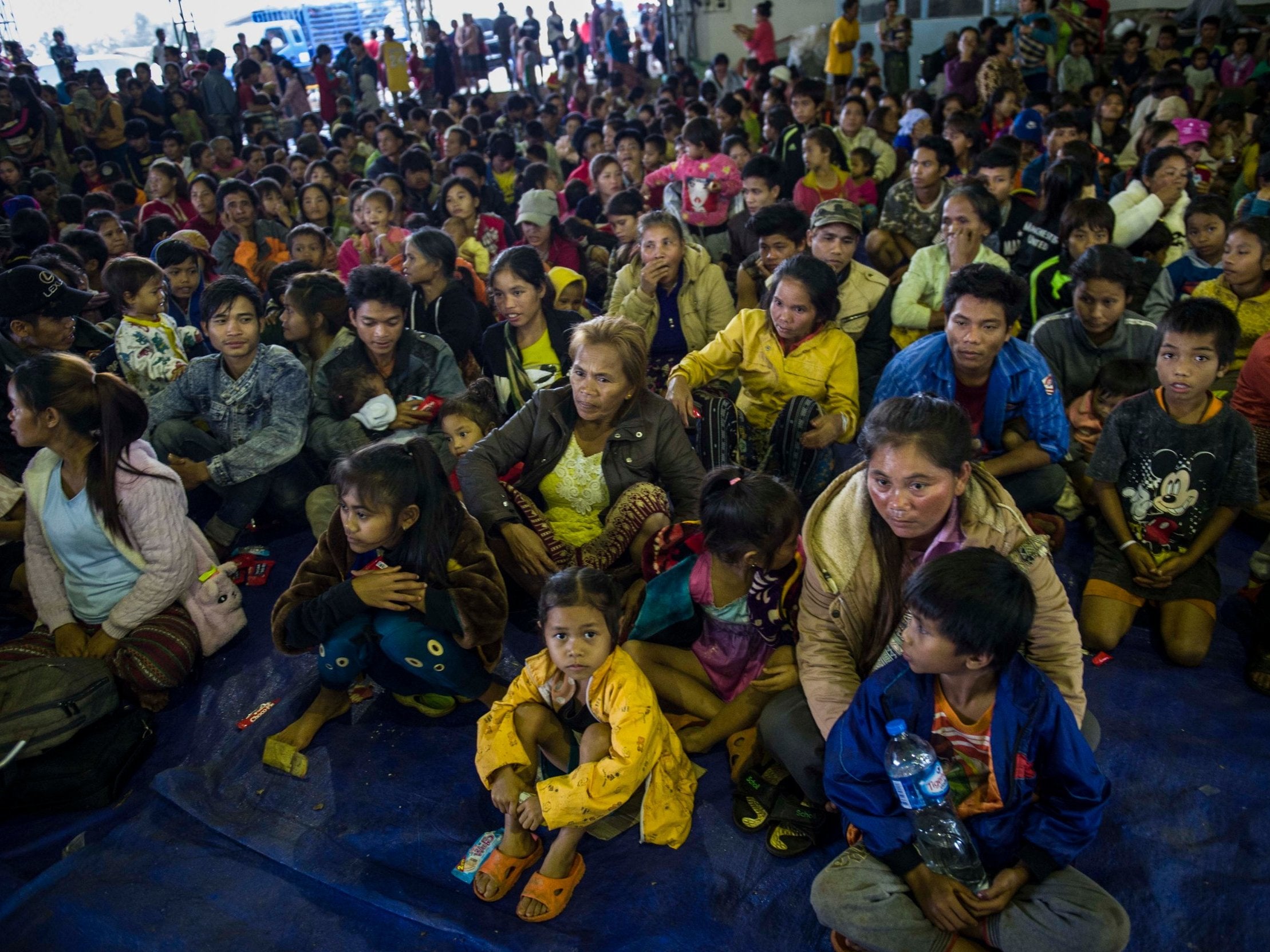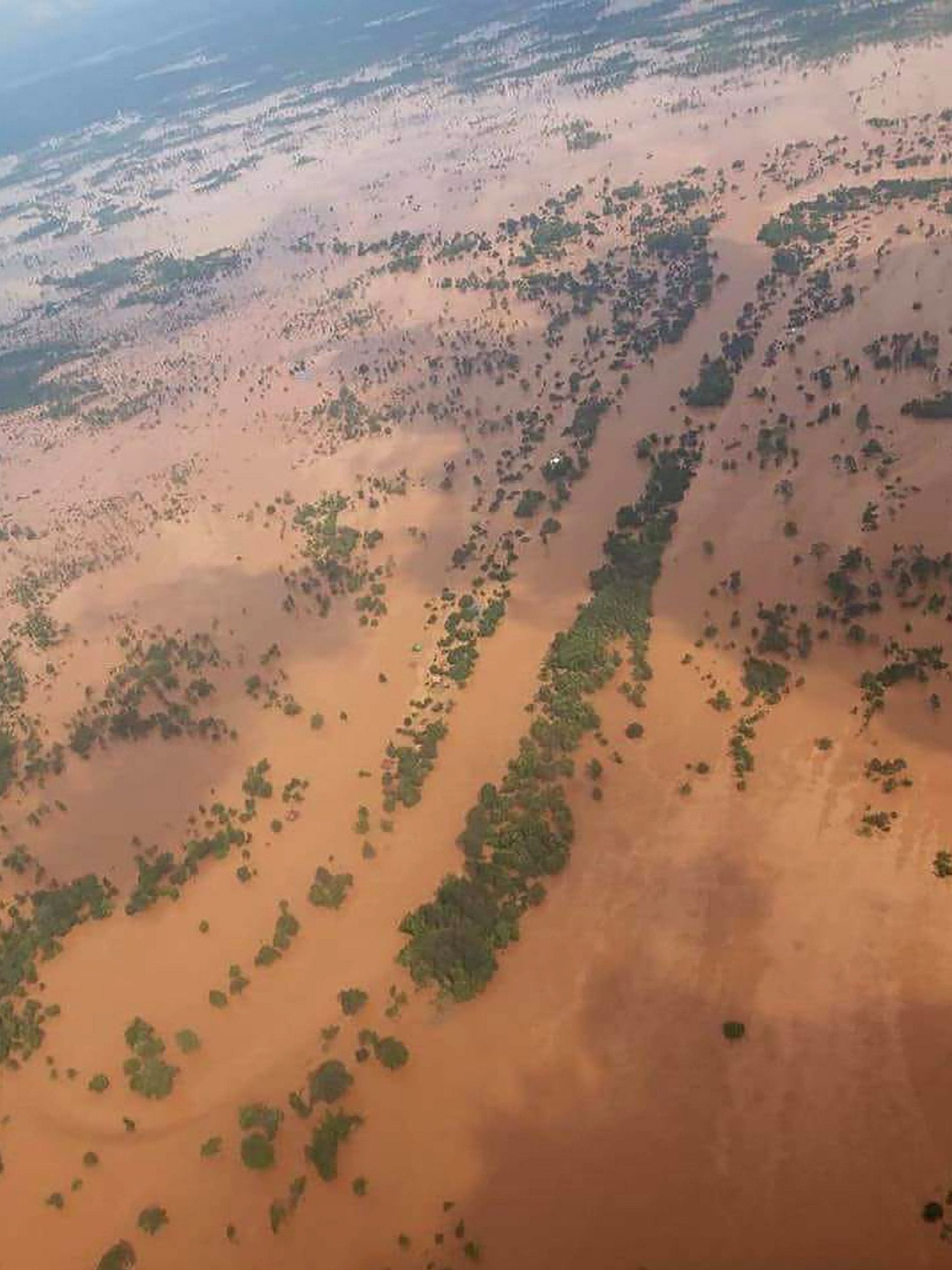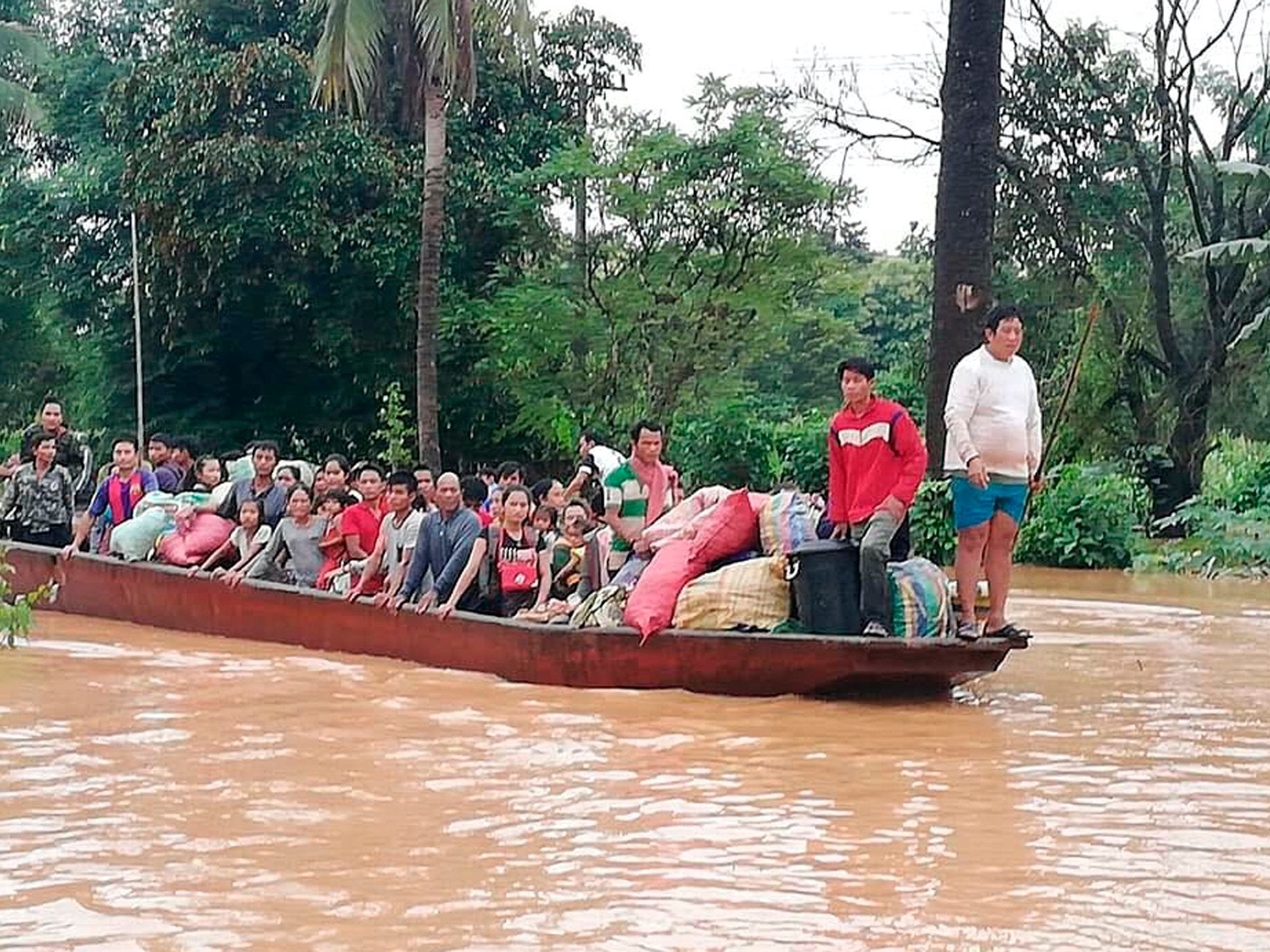Laos dam collapse: Thousands require rescue after disaster kills at least 19
More than 6,000 people lost their homes when the dam gave way
Thousands of people remain stranded after a dam collapsed in a remote part of Laos, unleashing a torrent of water which swept through villages and killed at least 19 people.
Around 19 people have been “found dead” and more than 3,000 “require rescue”, district governor Bounhom Phommasane told the Vientiane Times, adding that around 2,851 have been saved so far.
More than 6,000 people lost their homes when the dam gave way on Monday, releasing 5 billion cubic metres of water and flooding surrounding villages.
Photos and videos from the scene showed people sitting on rooftops to escape the surging water, while others were carried to safety or rescued by boat.
At least seven villages have been submerged by the floodwater.
State media pictures showed one-storey homes flooded with muddy water and said helicopters were also being used to rescue victims.
SK Engineering and Construction, one of two South Korean partners in the Xe-Pian Xe-Namnoy power project, said the top of one of five auxiliary dams “got swept away” after heavy rains.
But Korea Western Power, which was due to operate the hydroelectric power plant after its completion, said problems first emerged when workers discovered the dam’s centre had sunk by 11cm (4.3in) late last week.
Repair work for the earthfill dam was hampered by heavy rain and damaged roads and the situation worsened as water cascaded out of the reservoir, flooding seven out of 12 villages in the area, SK Engineering and Construction said.
The company was helping to evacuate and rescue residents while also trying to contain further damage. Shares in major stakeholders of SK Engineering and Construction fell on Wednesday after news of the collapse.

The government declared the area in Attapeu province a disaster zone and senior officials rushed to the site, it said.
Continued heavy rain and strong winds forecast for the area could hinder rescue efforts, and risks from flooding persisted in the mountainous region.
Provincial authorities issued a call for emergency aid – clothing, food, drinking water, medicine, cash and other items – from the “party, government organisations, business community, officials, police and military forces and people of all strata”.
The International Red Cross said food was a concern because village food supplies were drenched in the flooding. It was arranging for water purification units to be sent to the area to ensure supplies of clean drinking water.
The presidential office in South Korea said President Moon Jae-in had ordered an emergency relief team to help with the disaster.

Laos, one of the world’s few remaining communist states and one of Asia’s poorest countries, has an ambitious dam-building scheme in order to become the “battery of Asia”.
Its government depends almost entirely on outside developers to build its planned portfolio of dams under commercial concessions which agree to export electricity to its more developed neighbours, including Thailand.
But dam-building along the Mekong river and its tributaries, including those affected by this disaster, has raised concerns over environmental impact and other problems.

Environment rights groups have repeatedly warned about the human and environmental cost of the rapid pace of dam construction, including damage to the already-fragile ecosystem of the region’s rivers.
International Rivers, a nongovernmental group generally critical of such projects, said the catastrophe showed the need to improve warning systems.
“With over 70 hydropower projects currently built, under construction and planned across Lao PDR – most of them owned and operated by private companies – authorities must immediately review how dams are being planned, designed and managed,” the group said in a statement.
Last year, the 15-megawatt Nam Ao hydropower dam collapsed in Laos’s northern Xieng Khuong province, resulting in flash floods that “damaged property and risked lives”.
Additional reporting by agencies
Join our commenting forum
Join thought-provoking conversations, follow other Independent readers and see their replies
Comments